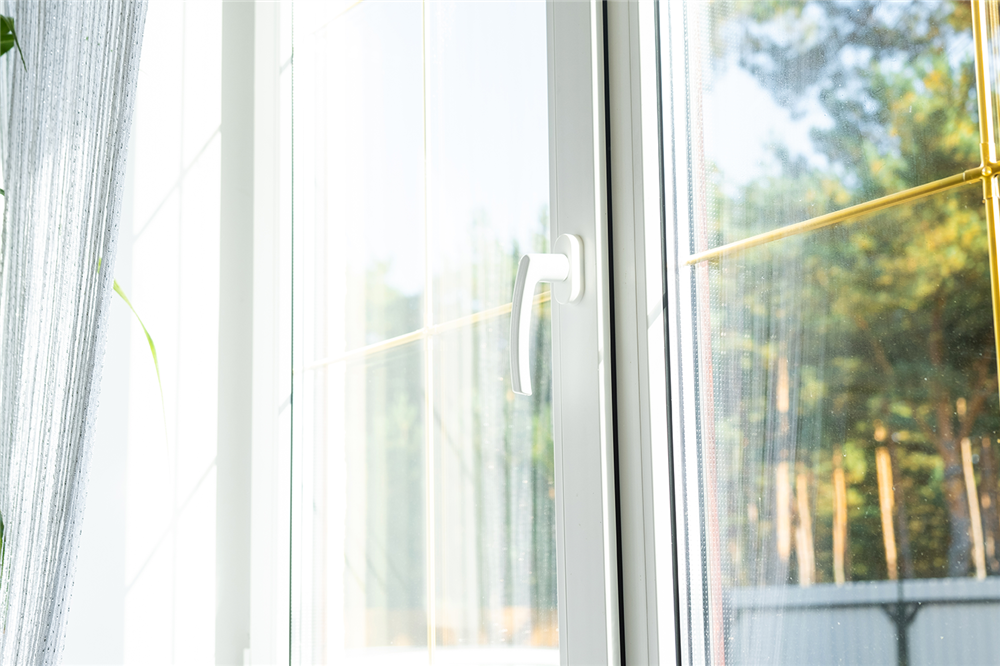Integrating Aluminium or uPVC Windows into Your Home Design: Which is For You?
Choosing the right material for your window frames may seem daunting at first, especially when considering two popular non-wooden materials that are quite different from each other. In this blog, we break down the pros and cons of aluminium and unplasticised polyvinyl chloride (uPVC) window frames. Continue reading to discover the essential characteristics, advantages, and disadvantages of these materials, and make an informed decision for your home.
Overview of Aluminium Window Frames
Aluminium windows have been around since the mid-1900s and have been an insanely popular choice for contemporary architecture on account of their sleek, modern appearance and their notably durable construction. Aluminium window frames’ inherent robustness and stability make them especially suited for large, transparent window installations. Aluminium’s high strength-to-weight ratio makes minimalistic frames with larger glass areas possible, maximising natural light and outside views.
Aluminium windows are naturally resistant to corrosion, rot and water damage, making them increasingly popular in areas with harsh weather conditions, including coastal areas, where the salt spray and high humidity deteriorates lesser materials. Those looking for a low maintenance, modern and stylish window solution for their homes can safely invest in aluminium windows.
Pros & Cons of Aluminium Windows
Advantages of Aluminium Window Frames
Durability & Lifespan - Aluminium windows are renowned for their robust nature, which is the main contributor to their 40 to 50 year lifespan (if maintained properly). This longevity makes aluminium window frames a desirable choice for many homeowners.
Visual Aesthetics - With their sleek frames and wide range of colours to choose from, Aluminium windows are built for modern architecture. They allow for flexible design and architectural choices that incorporate large panel windows that flood your building with natural light and blend the lines between inside and outside.
Eco-Friendly Design - Aluminium is nearly 100% recyclable, giving the material a very low environmental impact across its lifecycle compared to other materials. Aluminium windows are thus very well aligned with sustainable building practices.
Low-maintenance - Window frames constructed with aluminium require very little maintenance while continuing to offer fantastic resistance and durability. The most you’re required to do in many cases is to properly clean your aluminium window frames every 3 to 4 months (every month in coastal regions) in order to maintain their appearance.
Disadvantages of Aluminium Window Frames
Low Thermal Efficiency - Windows made with aluminium frames require modern thermal breaks or special construction to be thermally insulating. Without these, aluminium windows are less energy efficient than some other materials, which can lead to higher energy cost, especially in regions that experience extreme cold. Opting to either get thermal breaks or specially constructed windows can increase the already higher upfront cost of insulation.
Overview of uPVC Window Frames
uPVC windows are renowned for their high insulating and budget-friendly nature. These windows started to become popular in the 1980s and they gained traction due to them solving the problem of aluminium framed windows that would form condensation and become very cold, especially during winters. uPVC is a type of hard plastic, which is very durable and resistant to rot, water, corrosion and environmental wear/tear. This allows uPVC window frames to sport a long lifespan with minimal maintenance. These windows come in a variety of colours and finishes, although a smaller variety than aluminium windows, making them an attractive option for buildings of many architectural styles.
Pros & Cons of uPVC Window Frames
Advantages of uPVC Windows
Energy Efficiency - uPVC windows have good thermal insulation, which helps reduce energy costs by maintaining the internal temperature of your home.
Low Maintenance - uPVC windows, much like aluminium windows, require very little maintenance. They require only regular, simple cleaning to keep the window frames looking new. Their resistance to fading and various forms of damage contributes to these windows’ long lasting, low maintenance durability.
Disadvantages of uPVC Windows
Aesthetic Drawbacks - uPVC windows tend to have a bulkier, less modern look compared to the sleek design of aluminium window frames. This does result in them not working completely in buildings of a more contemporary architectural style.
Durability Limitations - Although uPVC windows are inherently durable and resistant to a range of damages, they do have a much shorter lifespan than aluminium windows, generally lasting around 20 years (up to 30 with professional, regular maintenance).
Customisation Limitations - As mentioned earlier, uPVC windows do have a range of colours and finishes. These are, however, much more limited than what is available for aluminium windows. uPVC windows can also not be painted over without special types of paint.
Environmental Impact - uPVC windows are less environmentally friendly than aluminium windows. Since uPVC is a durable plastic, it is not easily recyclable and releases toxic chemicals when burnt. The production of uPVC also requires an energy-heavy process that releases toxins, thus uPVC is the less sustainable choice.
In sum, when making the choice between aluminium and uPVC for your windows, we suggest you consider your budget, desired aesthetics, environmental concerns, maintenance requirements and the desired longevity of your windows. Aluminium windows are the perfect choice for those looking for durability, modern/sleek design and eco-friendly options. uPVC windows, on the other hand, are great for those in the market for a thermal insulating, low maintenance option.
Both options offer their own unique pros and cons that need to be considered. We highly recommend consulting with a professional before making any final decisions, as they can help you strike the right balance between style, functionality and any other factors in order to assist you in finding your perfect option.
Please feel free to take a look at our other blogs if you want more information, tips and guides on topics relating to doors, windows and home improvement.

